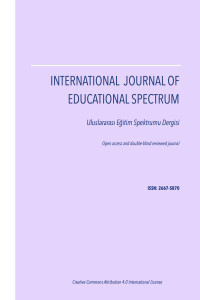Analysing speakout upper-intermediate second edition from an intercultural point of view
Analysing speakout upper-intermediate second edition from an intercultural point of view
___
- Celce-Murcia, M. (2007). Rethinking the role of communicative competence in language teaching. In E. Alcón, & M. P. Safont (eds.) (2007), Intercultural Language Use and Language Learning (pp. 41-57). Dordrecht: Springer.
- Eales, F., & Oakes, S. (2015). Speakout Upper intermediate second edition. Harlow: Pearson Education.
- Gray, J. (2000). The ELT coursebook as cultural artefact: how teachers censor and adapt. ELT Journal, 54(3), 274-283.
- Níkleva, D. G. (2012). La competencia intercultural y el tratamiento de contenidos culturales en manuales de español como lengua extranjera. RESLA, 25, 165-187.
- Paricio Tato, M. S. (2005). La dimensión cultural en los libros de texto de lenguas extranjeras: pautas para su análisis. Glosas didácticas, 15, 133-144.
- Sercu, L. (1995). Intercultural Competence. Denmark: Centre for Languages and Intercultural Studies.
- Sercu, L. (2006). The foreign language and intercultural competence teacher: the acquisition of a new professional identity. Intercultural Education, 17(1), 55-72.
- Young, T. J., & Sachdev, I. (2011). Intercultural communicative competence: Exploring English language teachers’ beliefs and practices. Language Awareness, 20(2), 81-98.
- ISSN: 2667-5870
- Yayın Aralığı: Aylık
- Yayıncı: Hakan ULUM
Erken çocukluk dönemindeki çocukların aile ilişkilerinin öyküler yoluyla incelenmesi
Hatice UYSAL BAYRAK, Sevim BUZLUGÖL, Şeyma OKAN, Hamide BÜYÜKPANCAR
DİSLEKSİ ÖĞRENCİLERİNE İLİŞKİN YABANCI DİL ÖĞRETİM YÖNTEMİ: BİR KARMA YÖNTEM ÇALIŞMASI
Analysing speakout upper-intermediate second edition from an intercultural point of view
